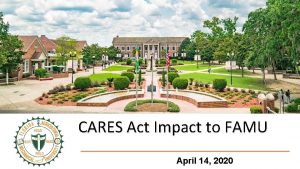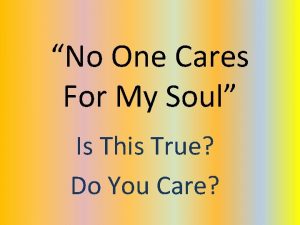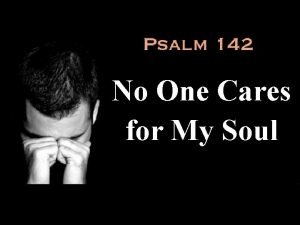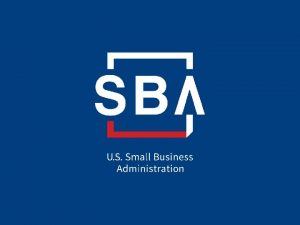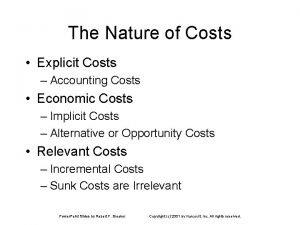CARES ACT COVERED COSTS The CARES Act provides





- Slides: 5

CARES ACT COVERED COSTS The CARES Act provides that payments from the Fund may only be used to cover costs that— 1. are necessary expenditures incurred due to the public health emergency with respect to the Coronavirus Disease 2019 (COVID– 19); 2. were not accounted for in the budget most recently approved as of March 27, 2020 (the date of enactment of the CARES Act) for the State or government; and 3. were incurred during the period that begins on March 1, 2020, and ends on December 30, 2020. 1

Coronavirus Relief Fund Guidance—Eligible Expenditures Eligible expenditures include, but are not limited to, payment for: • Expenses for acquisition and distribution of medical and protective supplies, including sanitizing products and personal protective equipment, for medical personnel, police officers… • Expenses for disinfection of public areas and other facilities, e. g. , nursing homes, in response to the COVID-19 public health emergency. • Expenses for technical assistance to local authorities or other entities on mitigation of COVID-19 related threats to public health and safety. • Expenses for public safety measures undertaken in response to COVID-19. • Emergency medical responses, including medical transportation, related to COVID-19

Coronavirus Relief Fund Guidance—Eligible Expenditures Payroll expenses for public safety, public health, health care, human services, and similar employees whose services are substantially dedicated to mitigating or responding to the COVID- 19 public health emergency. May presume that public health and public safety employees meet the substantially dedicated test, unless the chief executive or equivalent of the relevant government determines the specific circumstances indicate otherwise…

Key Factors for Decisions: “expenditures be incurred “due to” the public health emergency… the expenditures must be used for actions taken to respond…” Protection of Public Protection of Employees Protection of the Democratic Process (1) Would a reasonable person in the role of a trustee determine the costs were necessary? (2) Would a reasonable person in the role of a trustee determine the use of the money was related to the COVID-19 crisis? (3) Document, document (4) Obtain a legal opinion in any situation that is not obvious

Ohio Auditor Summary of CARES ACT Funding • Funds may be used to respond directly to the emergency as well as respond to second-order effects of the emergency, such as by providing economic support to those suffering from unemployment or business interruptions due to COVID-19 -related business closures. • The statute says that an expenditure must be "necessary. " Treasury interpreted this term to mean reasonably necessary for its intended use in the reasonable judgment of the government officials responsible for spending Fund payments. • Funds may not be used to fill shortfalls in government revenue to cover expenditures that would not otherwise qualify under the statute. Many uses of funds are allowed, but revenue replacement is not one. • The CARES Act also requires that payments be used only to cover costs that were not accounted for in the budget most recently approved as of March 27, 2020. The "most recently approved" budget refers to the enacted budget for the relevant fiscal period for the particular government, without taking into account subsequent supplemental appropriations enacted or other budgetary adjustments made by that government in response to the COVID-19 public health emergency. • Payroll expenses for public safety, public health, health care, human services, and similar employees whose services are substantially dedicated to mitigating or responding to the COVID-19 public health emergency. • Expenses of providing paid sick and paid family and medical leave to public employees to enable compliance with COVID-19 public health precautions.
